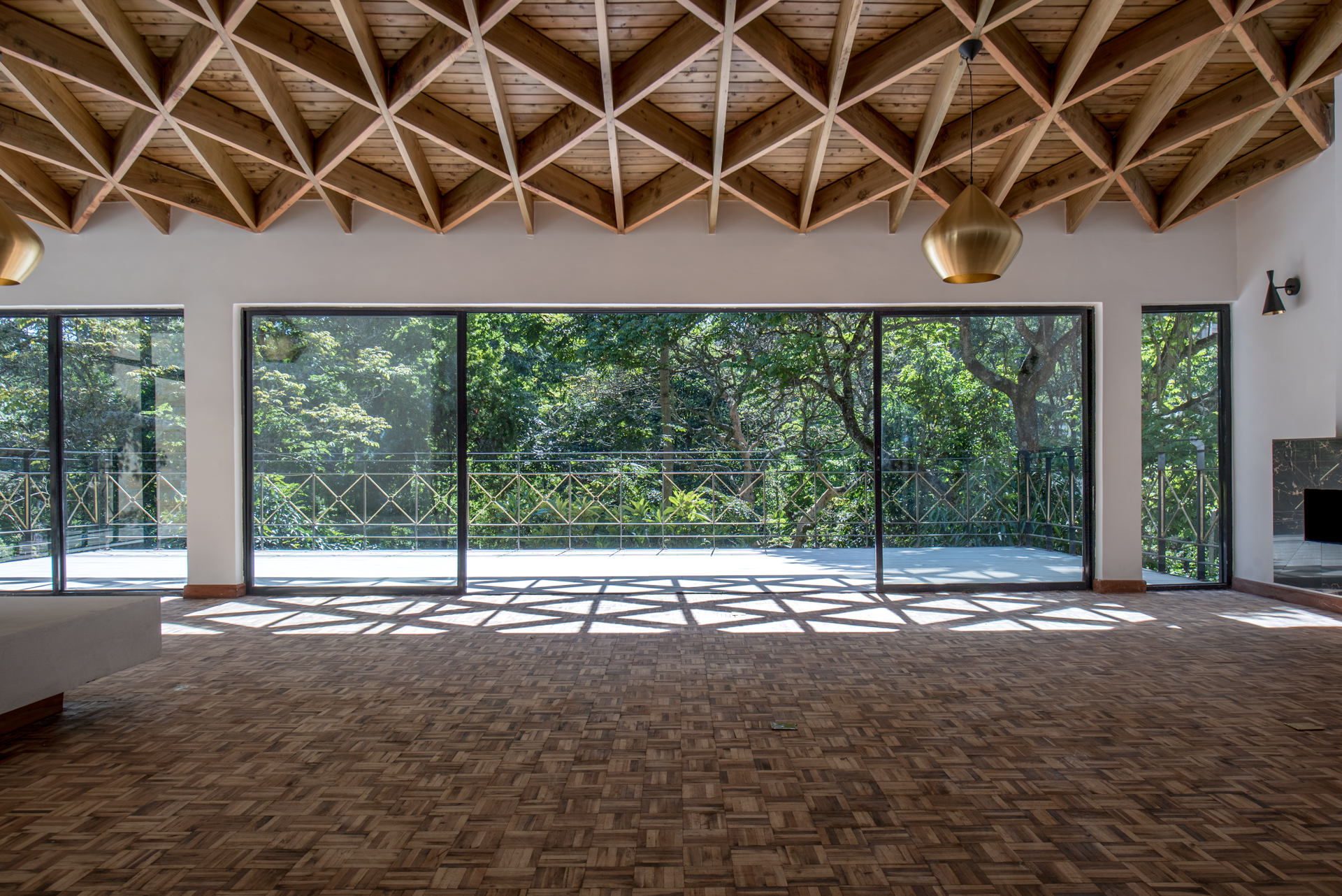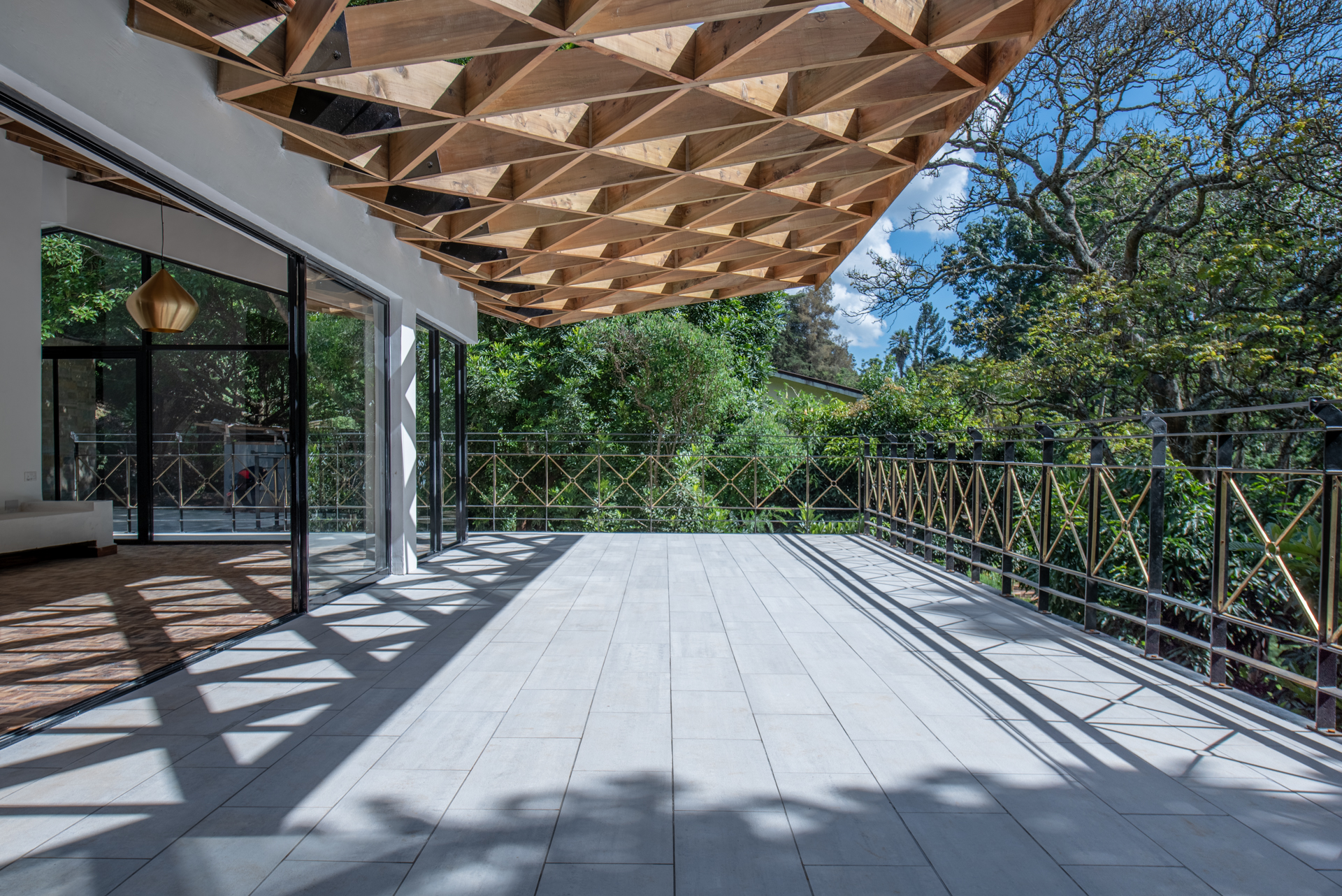This residential property, built for a British-raised Kenyan working for the UN, combines a mixture of renovation, extension, and smart sourcing of labour and materials to provide luxury on a budget. Key to saving costs was the use of a JCT Minor Works Building Contract with contractor’s design.
The large site for this property, set in well-healed Nairobi suburb, already contained a bungalow which presented two initial challenges. Firstly, budget precluded the option to completely remove the structure and secondly, the undesirable aspect of the building, which was not oriented to maximise the views and space, meant that a smart redesign and renovation of the existing structure, as well as extending where necessary, would be required.
The main part of the new building elements extends the house out into the former terrace, with new floor-to-ceiling glazing opening onto a verandah which cantilevers out over the garden. A lattice form of terrace rafters adds an interesting design feature, connecting the inside and outside space. Starting with one half in the ceiling of the living area, the other half overhangs the verandah, supported by a concrete beam at the glazing line. The resulting space created for al fresco dining is surrounded by brass, cross-braced balustrades. The interstices are inset with medallions of Kenyan cow horn – a detail usually found in locally crafted jewelry and sculptures.
The existing suspended ceilings in the old bungalow have been completely removed to reveal the roof structure. Painted white, these opened areas allow more light in and create the feeling of more space. The existing hardwood flooring throughout the property has been cleaned, renovated, and reused, added to the new living room. Extra hardwood required to complete the flooring was sourced from India.
Throughout the property, the design aims to temper the use of luxury finishes and appointments with the use of everyday, raw materials. This is exemplified by both the joinery – fitted mvule hardwood inlaid with dark palm wood handle reveals, that is fitted with panels of rough, hessian covered, timber – and the casting and installation of dyed concrete sinks in the bathroom.
A surprising cost saving measure was the procurement of the higher-end lighting, tiled flooring, and sanitaryware from the UK. This involved a container full of goods being shipped, compiled, and delivered to site in one go, combining with the use of local crafts and craftspeople to complete the build.
The use of local crafts, specialists, and materials was vital for the project team to maintain a local ‘vernacular’. The team wanted the building to be authentically Kenyan, rather than an imposed British aesthetic or imported idea of what a Kenyan building might be like. The choice of materials, for example the hessian used in the joinery is a nod to the same material that would be used as the equivalent of cheap tarpaulin.
One of the project’s main challenges, which resulted in being one of its unique strengths, was working without precision technology and using local artisans to craft everything by hand, whilst still achieving a luxury, precise finish. The project team, lead by architecture practice A Small Studio, relied on daily conversations and multiple Whatsapp group chats to ensure the quality of the finishing. The communications between various project team members fostered a closely collaborative and iterative process, where each discipline was able to learn and adapt to the other’s skills.
The sourcing of UK expertise with local materials, crafts, and skills was not the only cost saving measure. The use of a JCT contract, in the Kenyan context, was an important resource to ensure the efficiency of the project. Due to their consensus development, comprehensiveness, and reflection of legal precedent, JCT contracts can be well adapted to use outside the UK, where a set of well-establish benchmark provisions is desired to facilitate the procurement process.

Images: MOD Photograpy

